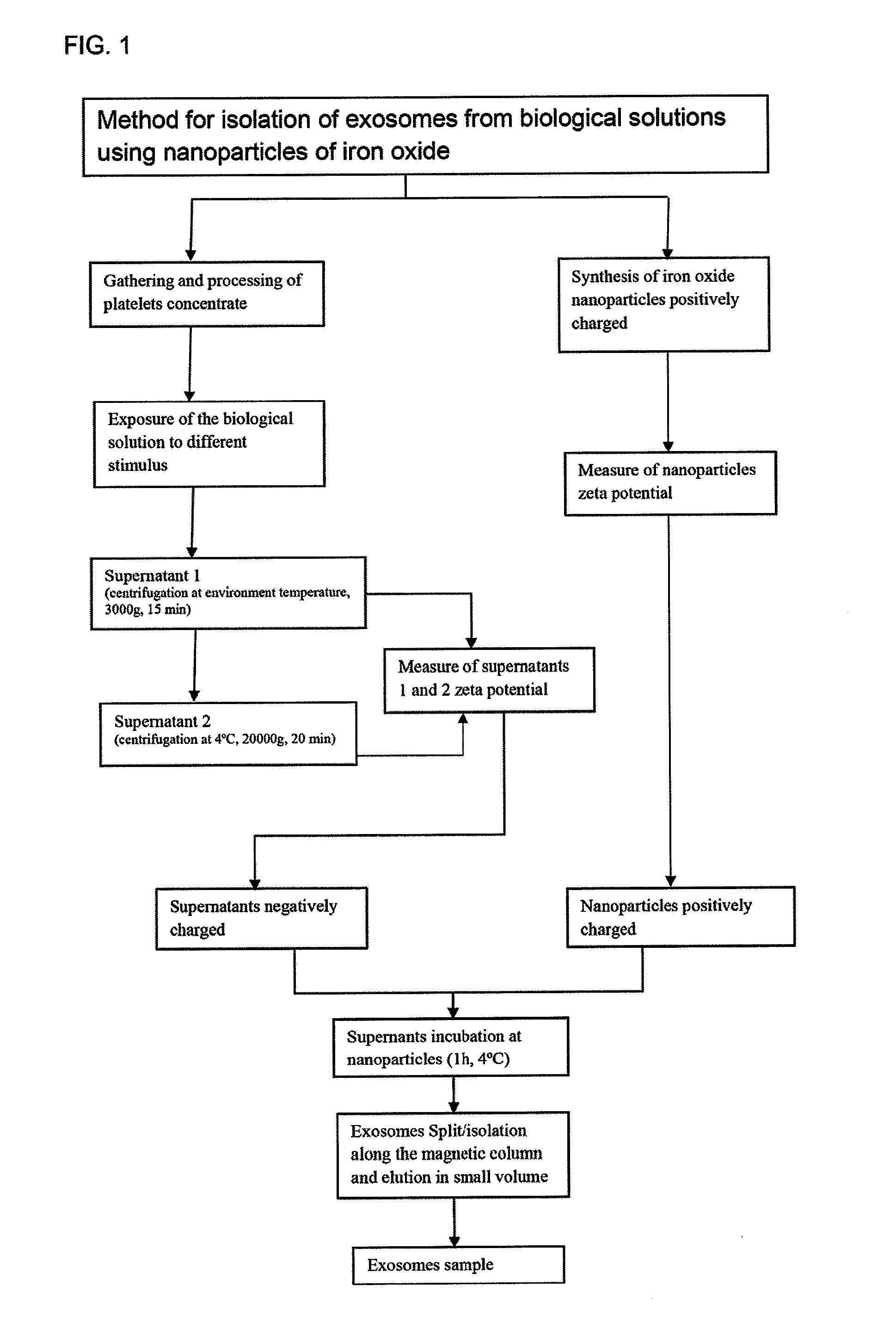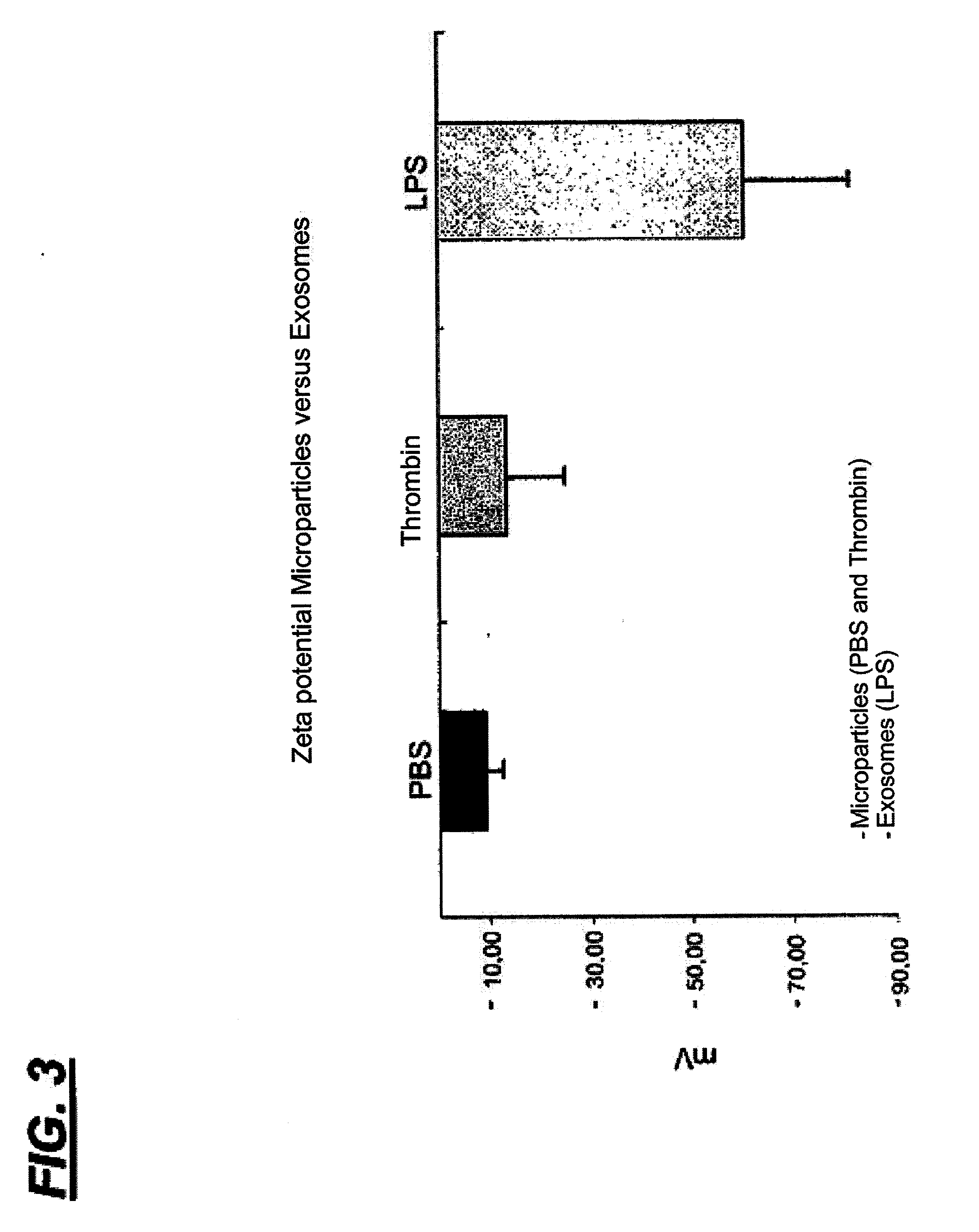Method for isolating exosomes from biological solutions using iron oxide nanoparticles
a technology of iron oxide nanoparticles and biological solutions, applied in the field of platelet exosome isolation, can solve the problems slowness, and inability to guarantee the structural conservation of particles, and achieve the effect of preserving structural and functional integrity
- Summary
- Abstract
- Description
- Claims
- Application Information
AI Technical Summary
Benefits of technology
Problems solved by technology
Method used
Image
Examples
Embodiment Construction
[0020]In reference to the figures, the current invention relates to a “METHOD FOR ISOLATION OF EXOSOMES FROM BIOLOGICAL SOLUTIONS USING NANOPARTICLES OF IRON OXIDE”, being that, more specifically, the method for isolation of exosomes derived from platelets using superparamagnetic magnetite nanoparticles (Fe3O4), is done through an attraction charge mechanism based on the exosomes pre-determined zeta potential.
[0021]The method consists of the use of iron oxide nanoparticles previously synthetized with pre-determined positive charge that are linked to the exosomes negatively charged, comprised in the biological sample, by means of electric attraction; the material exposure to a magnetic field allows the split of exosomes that were linked to the nanoparticles; the success of this technique is confirmed by the characterization of exosomes by flow cytometry.
[0022]Therefore, the method can be defined in the following stages:
(a) Platelets were stimulated to generate typical exosomes and co...
PUM
| Property | Measurement | Unit |
|---|---|---|
| diameter | aaaaa | aaaaa |
| zeta potential | aaaaa | aaaaa |
| magnetic field | aaaaa | aaaaa |
Abstract
Description
Claims
Application Information
 Login to View More
Login to View More - R&D
- Intellectual Property
- Life Sciences
- Materials
- Tech Scout
- Unparalleled Data Quality
- Higher Quality Content
- 60% Fewer Hallucinations
Browse by: Latest US Patents, China's latest patents, Technical Efficacy Thesaurus, Application Domain, Technology Topic, Popular Technical Reports.
© 2025 PatSnap. All rights reserved.Legal|Privacy policy|Modern Slavery Act Transparency Statement|Sitemap|About US| Contact US: help@patsnap.com



